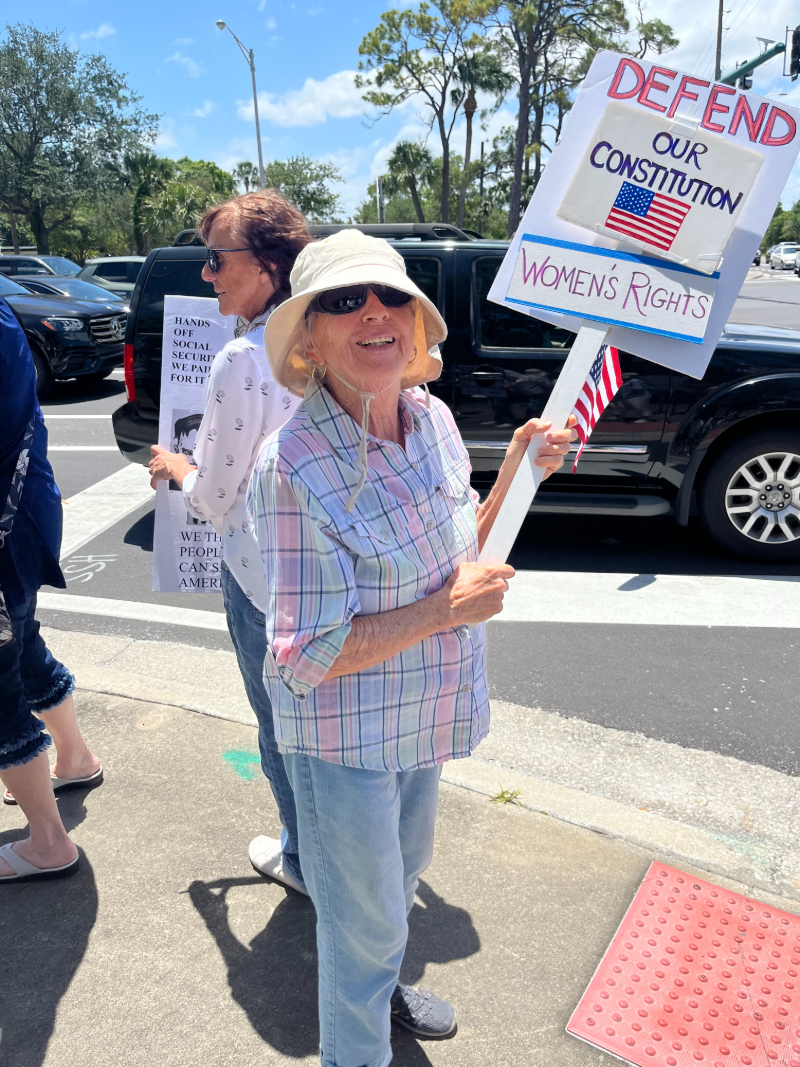Sign up for CleanTechnica’s Weekly Substack for Zach and Scott’s in-depth analyses and high level summaries, sign up for our daily newsletter, and/or follow us on Google News!

So many people I talked to who did not attend the Rally for America admitted they were afraid.
They feared walking into a confrontation with violent Trump supporters. They were anxious about being targeted personally by the Trump administration. They worried that their activism might have devastating consequences for family members, lots of whom are brown people.
Many of us, though, transcended our hesitations. We recognized that the Rally for America was an unknown space where trouble could brew, and, yet, we made the decision to attend. We took our handmade signs and gathered, drawing upon a reservoir of feeling that the only way to fix the enormous problems in the US federal government was to work together collectively as opposed to individually.


On Saturday, April 19, 2025, millions of US citizens took to the streets. This was the second day of mass action in April that arose in increasing vocal opposition to the treason taking place at the US federal level. We stood beside everyday roadways and held personalized signs that expressed our outrage about the Trump administration’s desecration of the Constitution.
At the Rally for America protest in Fort Pierce, Florida — the location of the federal courthouse where infamous District Judge Aileen Cannon dismissed charges against President Donald Trump that accused him of mishandling classified documents — we gathered at the intersection of two busy cross streets. A casual count indicated that about one thousand people were in attendance. I viewed no counter-protesters or physical threats to the Rally for America protesters. The gathering remained peaceful.
Red state, my ass. These were people who were fed up with the pretense of populism and who joined with other like-minded people to speak out. We were empowered citizens who rose up to challenge the political opportunity structures that the Trump administration has used to hijack our democracy.



There are a variety of potential goals for a protest, according to the ADL: to influence public opinion, draw attention to and share information about a perceived injustice, gain a wide audience for the cause, push public policy or legislation forward, learn more about an issue, connect with others who feel passionate about the issue, speak one’s truth, and bear witness.
Protests can also provide inspiration and a sense of being part of a larger movement, as is happening with climate activism.
Social media has increasingly been used as a tool to inspire others and to mobilize climate change protests. The overarching purpose of protests is to demand change, and there is strong evidence that climate activism shifts public opinion and media coverage in a pro-climate direction. Such climate action can lead to massive increases in whether people have heard at all about the climate organization conducting the protests, the need for climate funding, and the ways that climate change affects local communities.
Lauren Duncan, professor of psychology at Smith College, says that protests tend to become more effective if they can get the silent majority on their side. Those of us in the climate action camp want to make our voices heard, recognizing that protest is an invaluable way to speak truth to power. We work to expose how climate injustice is abuse. We demand accountability and seek ways inspire others to keep advocating for a better, healthier, safer, and environmentally-sound future.
We also had the prior knowledge that, on April 5, “Hands Off!” rallies in major US cities had drawn large crowds of people from all walks of life, including those activists who seek to make transparent the existential threat of climate change. According to media reports, there had been more than 500,000 protesters in 1,400 towns and cities that day, part of the “50501” decentralized movement.
As Norm Eisen described in The Contrarian, “This week we also saw a speech by Rep. Alexandria Ocasio-Cortez drawing a crowd of 20,000 in Utah, plans for a second economic boycott, rowdy town halls in Iowa and Georgia, a demonstration against a capitulating law firm, and much more.”
Political protests are becoming more frequent in the US; it is much more commonplace in Europe. The Brookings Institute notes, “As a sign of their organic and authentic nature, the protests have grown from hundreds of participants in late March to hundreds of thousands today. The protests mirror trends in public opinion surveys, which show widespread anger over staff layoffs, budget cuts, and violations of legal procedures.”
Regardless of age, class, race, or gender, US protesters this month have united in opposition to threats to democracy, violations of the rule of law, layoffs and budget cuts at federal agencies without congressional approval — including threats to the largest climate law in US history, the Inflation Reduction Act — and efforts to undermine Social Security, Medicare, and Medicaid operations.
Memories of Other Protests that Fought for Freedom and Liberty
As we stood and chanted slogans of resistance and cheered drivers who beeped their horns in solidarity, we reminisced about previous protests we had attended. For many Rally for America participants, it was the first time since college that they had appeared in public to make their dismay with government policy known.
A smaller number of us had participated in anti-war protests against the invasion of Iraq, the centerpiece of which was the estimated 1.5 million people march through the heart of London into Hyde Park, with parallel protests across the world. The protesters’ slogan “Not in My Name” is the defining image and soundbite of that movement.
For others, it was the Trump 1.0 inauguration and the Women’s March. My husband and I had been in Sydney, Australia, visiting family, where we joined in with thousands who pressed through the streets, standing together for equal rights and pledging to fight against gender oppression. Others braved cold temps that day in the US to stand together for women everywhere.
At the Rally for America, women came out in strong numbers and spoke out.

The Rally for America event in Concord, Massachusetts commemorated the 250th anniversary of the beginning of the American Revolution. It was a poignant time to draw parallels between that time, in which citizens fought for representation and voice, and now. Historian Heather Cox Richardson spoke at the anniversary of the lighting of the lanterns in Boston’s Old North Church, reflecting, “And once in a great while, someone will light a lantern—or even two—that will shine forth for democratic principles that are under siege, and set the world ablaze.”
The Boston Globe editorial board added to Cox Richardson’s insights.
“It is the words in the nation’s founding documents and the ideas behind those words that have had the most profound and lasting impact: that all men are created equal and endowed with certain unalienable rights. This of all years is not the time to forget the meaning of those words and the democratic system they spawned.”
Whether you have solar power or not, please complete our latest solar power survey.
Have a tip for CleanTechnica? Want to advertise? Want to suggest a guest for our CleanTech Talk podcast? Contact us here.
Sign up for our daily newsletter for 15 new cleantech stories a day. Or sign up for our weekly one if daily is too frequent.
CleanTechnica uses affiliate links. See our policy here.
CleanTechnica’s Comment Policy





